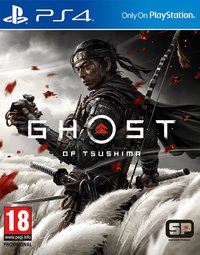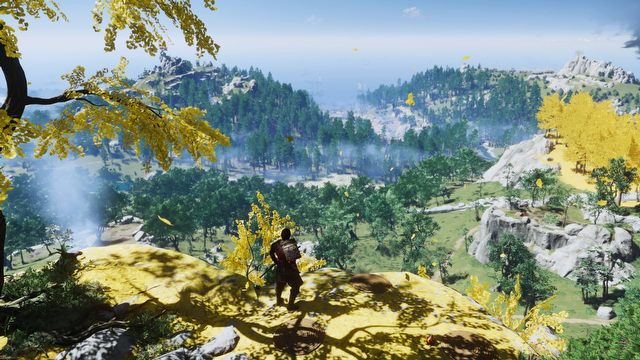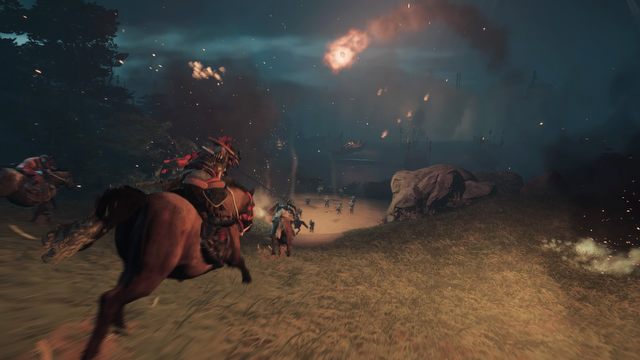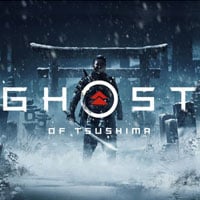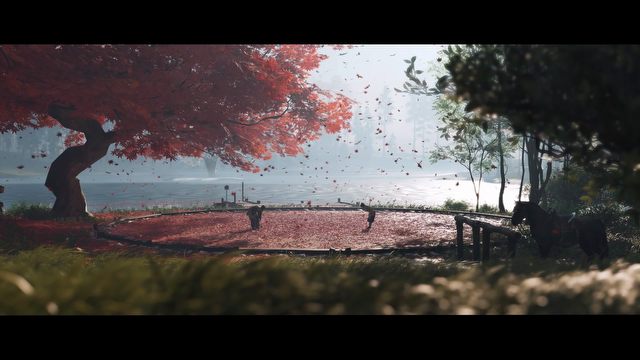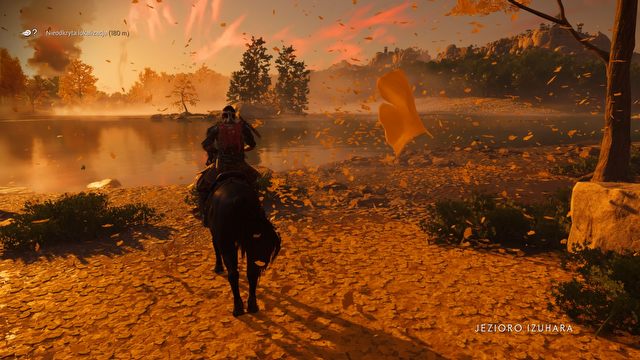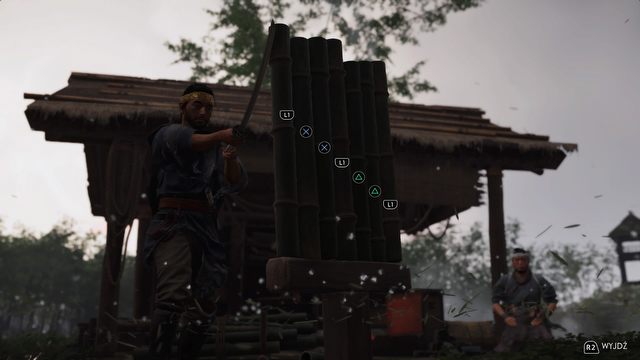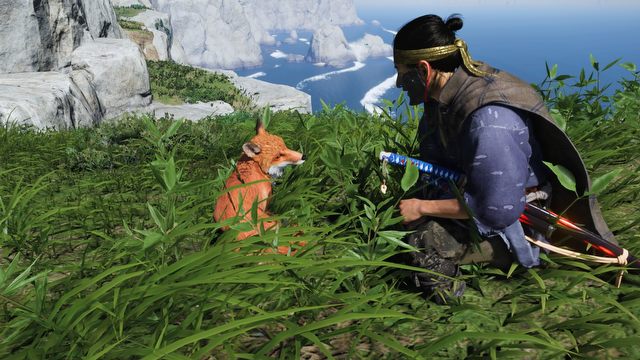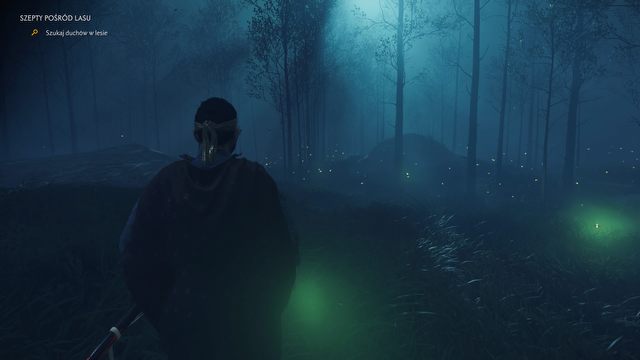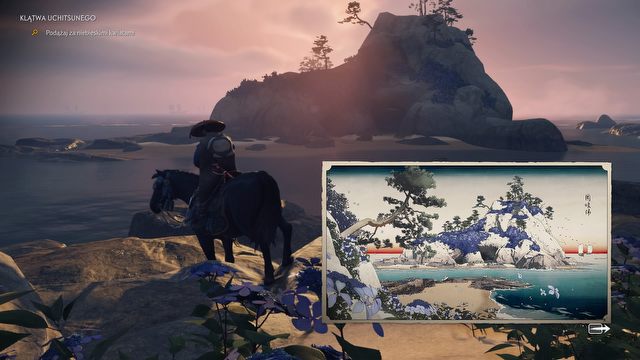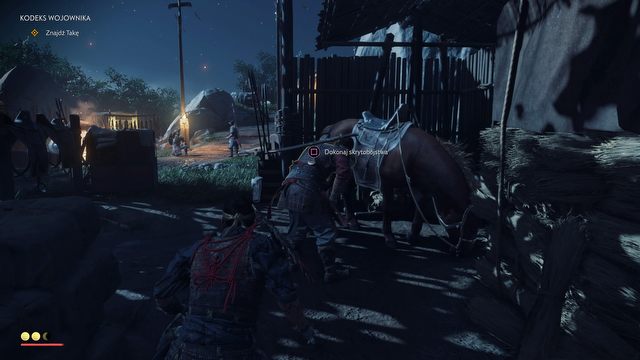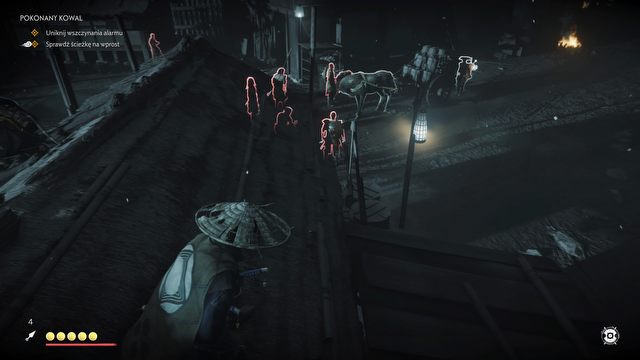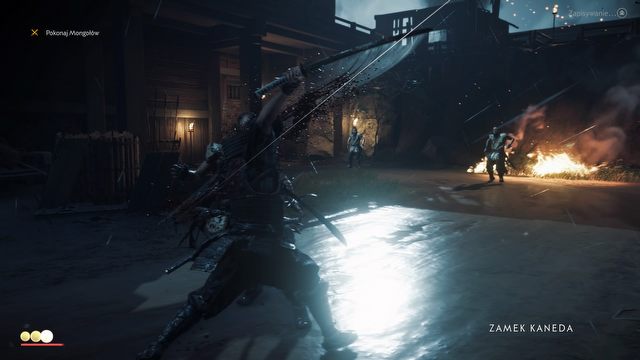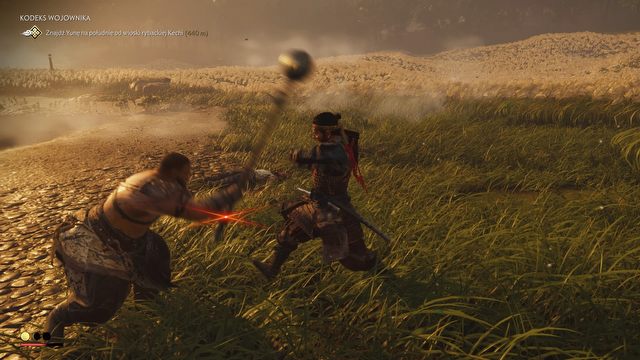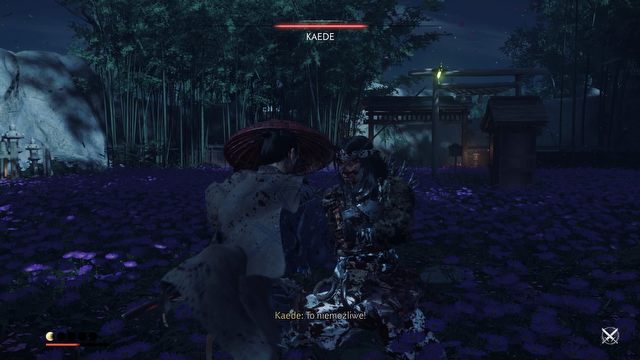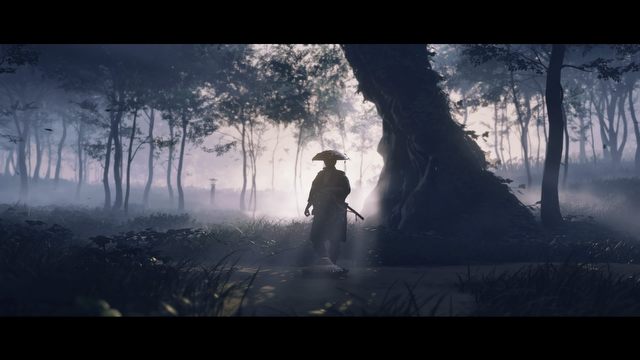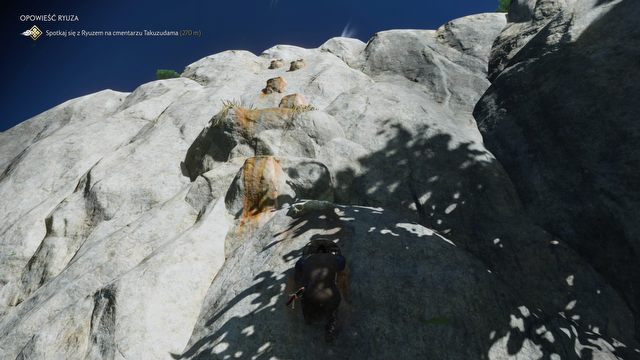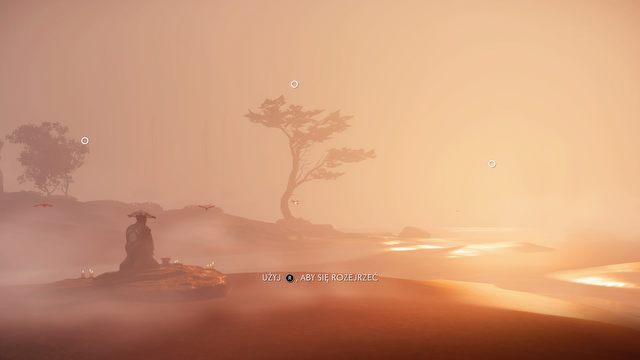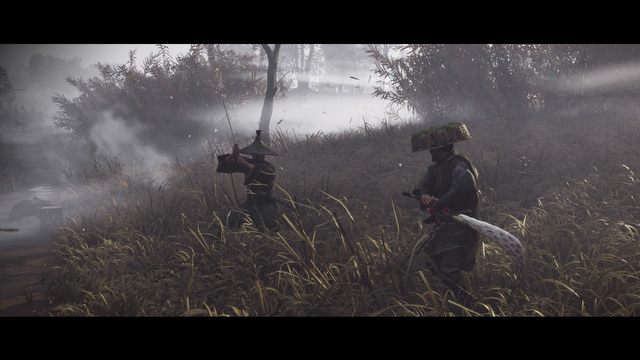Ghost of Tsushima Review - The Last Wind of PlayStation 4
With Ghost of Tsushima, Sony says farewell to PS4 with style. This action-adventure game is packed with oriental vibe and brings a breeze of new and interesting content.
The review is based on the PS4 version.

Sucker Punch Productions is one of Sony's in-house studios which had an opportunity to introduce the eighth generation of consoles to players. Infamous: Second Son that was created by this team was one of the first major exclusive titles developed for the PlayStation 4 and a demonstration of the hardware's technical capabilities. More than six years later, the same team received an equally important quest of saying goodbye to the retiring console – Ghost of Tsushima is the last major exclusive game PS4 will get from Sony Studios. And this farewell was made in a style!
Ghost of Tsushima fulfills the promise of a thrilling adventure set in Japanese realities by offering an engaging story, a beautiful world, and plenty of content. The game has a few flaws and annoying simplifications (at least until we get used to them). However, it also has many outstanding features that are building up all the fun. The outcome is just phenomenal.
GHOST OF TSUSHIMA IS:
- Sony's farewell to PlayStation 4 – the next games developed by the Japanese giant's studio are currently being developed for the PS5;
- An action-adventure game set in an open-ended world in which, alongside a plethora of main story-related quests and side tasks, there is a slew of simple markers to complete;
- An adventure imbued with the atmosphere of Historic Japan that depicts the brutal realities of war and, on the other hand, slightly romanticizes the presented in-game world;
- Despite a set of minor technical bugs & problems – a great game.
Blood and honor
- An immersive story with memorable moments and well-crafted characters;
- A very vividly created world, full of charming landscapes and views;
- Brilliant ideas for island exploration (lack of courage made it impossible to unleash its full potential);
- Coherent side activities that fit the atmosphere;
- Tons of interesting side quests and additional storylines;
- Provoking enemies is SUPERB!;
- Fantastic combat system;
- Satisfying character-development system that doesn't force you to grind;
- Sneaking mechanics is shallow and mediocre at best;
- Some features such as climbing or summoning a horse could have been better;
- Minor technical errors and frame rate drops.
The story begins with a typical earthquake, that is, drama full of tragedy. We have the second half of the 13th century. Located in the middle of the Korea Strait, the island of Tsushima becomes the first target of the Mongol invasion of Japan. Less than a hundred samurai warriors who inhabit the island have to confront the overwhelming enemy forces and are crushed in the course of an impressive playable sequence. Among the few survivors are the island's ruler, Shimura, who was taken prisoner by Mongols, and his nephew, Jin Sakai, who is rescued by the thief Yuna.
We play as Jin, the main protagonist of the game. From a young age, raised according to samurai traditions, taught that honor is a virtue more important than everything else, he believes that the traditional methods of fighting against the Mongols are the way to undeniable defeat. In order to save his uncle, the island, and perhaps all of Japan, Jin learns new ways of acting. He abandons honor and learns from Yuna how to become an assassin, which, in combination with his samurai training, makes him a deadly killer. Over time, he is being perceived as the Ghost in the eyes of the simple people, an almost mythical figure that sows terror and despair in the hearts of his enemies. Abandoning everything he believed in so far doesn't come easy for Jin. The price he has to pay for abandoning the bushido way in the name of saving his homeland and uncle will prove high.
The plot of Ghost of Tsushima follows the patterns set decades ago by samurai cinema, with the immortal works of Akira Kurosawa at the forefront. Fans of these types of movies will not be surprised by Jin's story, correctly predicting, based on suggestions made during the cutscenes, in which direction the story is headed.
However, predictability doesn't have to be a disadvantage when the story is solidly conducted and the characters are well–written. This is the case here. Jin's dilemmas resulting from abandoning honor and pushing further boundaries in the name of a greater good seem believable, as is his uncle's dilemma, who is torn between the love for his errant nephew and fidelity to the moral compass with which he lived all his years.
The story also features side characters, who players are bound to remember as they relive their own wartime tragedies. In addition to the aforementioned Yuna, we come across a warrior monk, an old bitter master, or a self-obsessed senior of a fallen family. Sucker Punch Productions even managed to create a pretty good villain – Khan, who is the leader of Mongol forces, may not arouse sympathy and is not the hero of his own story, but he has well-plotted motivations and does not act like a grotesque monster.
Most of all, the plot has great, memorable moments. I don't want to throw specific examples here that might spoil your enjoyment of experiencing them on your own, so I'll just write that the path the Ghost is taking is full of epic dialogues (come on, a samurai game can't exist without it), spectacular moments that evoke the effect of "WOW, that was so cool! I want to see it again!”, and sequences that are more peaceful, build atmosphere and more clearly draw relations between the characters. In turn, they all come out naturally and inexorably, organically fitting into the situations and atmosphere of the presented world. This is especially important in terms of the second category (the "WOW" moments, as I call them), which, thanks to the right foundation, make exactly the impression they should and do not fell artificial.
Ghosts of Tsushima
The main character of Ghost of Tsushima is Jin Sakai, but I would personally name another star of this show – the titular island of Tsushima. Feudal Japan is one of the most interesting historical settings for a video game – it's amazing that we had to wait so long for a high-budget open-ended world action-adventure game to take advantage of this vibe. It was worth being patient because Tsushima utilizes the potential of the Samurai World really well.
The island is divided into three main parts, which are accessed gradually as the story progresses, and each area represents a different time of year – starting in summer and ending in winter. The surroundings are breathtaking, however, in purely technical terms the game does not match the extremely high bar of graphics quality set by The Last Of Us 2. The colors of this world are bound to impress with some majestic landscapes, at which the finger itself moves to the "Share" button (while playing the game, I made over 400 screenshots, mostly postcards with beautiful landscapes).
When designing the in-game world, instead of faithfully recreating the real Tsushima, the developers set out to make the most attractive representation of Japan at the time. We explore forests of cherry blossoms, charming villages covered with blood-red leaves, dueling circles, fields of white flowers, castles, mountain shrines, sunlit lakes, snow-covered camps, and temples hidden among bamboo forests – if you can think of a view characteristic of the Land of the Rising Sun, you will almost certainly find it in the game. And make sure to stop for a moment to enjoy it, because the last such vividly created world in which I was astonished at the sights with each step I took was featured in Horizon: Zero Dawn.
The interiors of buildings are barely furnished and usually have the same props, devoid of any detail that would give the illusion that someone could really live in these places – they look dreadful in comparison to the outstanding landscapes. Also, in many rooms and interior locations you can notice the low resolution of textures. While the overall artistic direction of the game is impressive, the tuning of the finest details pushes Ghost of Tsushima away from the prettiest games.
KUROSAWA MODE
We can turn on a special graphics filter called Kurosawa mode before the game starts (and at any time from the options menu). When choosing to activate this mode, the screen turns black and white and features distinctive distortion that mimics the effects usually seen when watching old movies. The whole thing makes Ghost of Tsushima actually look like an interactive work directed by Japanese cinema legend Akira Kurosawa. Unfortunately, in this mode, the readability of the environment is severely reduced, so it is a piece of trivia rather than a way to play (unless someone is looking for an additional challenge) – but I would encourage you to turn on this filter for a few moments and take part in a few battles. The effect can nicely build up the atmosphere.
Tsushima is not just an empty mock-up and I like that a lot. By the latter I mean that we don’t have to run around from one marker to another between main or side quest. Here it doesn't work that way, mainly because the markers are not available most of the time – they only appear when we are very close to our destination.
So how do we navigate throughout this world? We are guided by the wind. Literally. When we choose the destination from the map, a wind blows around us, the direction of which indicates the destination of our journey. By carefully observing the reactions of leaves and flowers to gusts (which power we can temporarily increase when the natural ones are not visible enough), we are able to determine where to travel. In addition, when we find ourselves near some interesting location, a golden bird may appear which guides us to a particular collectible or a hidden location.
These mechanisms, although not significantly different from traditional markers, thanks to their genuine and unique presentation, differ from the classic indicators and feel much more natural, fitting into the atmosphere of the game and enriching it with a romantic backdrop. They also encourage more careful observation of the surroundings and, as I mentioned, make the island something more than just an typical empty level.
The effect could have been even better, but it seems that Sucker Punch have got a bit spooked at some point and decided to tone it down. So what if a golden bird can lead us to an objective, since our presence near a certain place (not necessarily very close) adds a traditional question mark "to complete" on the map, and the destruction of the enemy camp reveals such question markers located within a range of even few hundred meters.
As a result, exploration is somewhat split in between – on the one hand, we have brilliant ideas about nature pointing us to a destination instead of markers, on the other, we have a map disfigured by traditional question marks. This is all the more disappointing because a better system for exposing them has already been implemented in the game. By rescuing peasants from the hands of enemy soldiers or by talking to the settlers, we can learn from them the location of the mentioned enemy camps or side missions. The locations in question are marked on the map as "places known from rumors," which is much more natural than question marks appearing basically out of nowhere. It was enough to extend this system to all markers and the result would, in my opinion, be much better and more consistent.
The Ghost of Ubisoft
All right, it's nice and atmospheric, and we're led by birds and winds, but how does it actually feel to play Ghost of Tsushima? In one word – great. In one sentence – it’s a great game with a few flaws. The gameplay follows a quite traditional formula of open-ended action-adventure games. So if like me, you were waiting for Ubisoft to finally bring Assassin's Creed to Japan, you don't have to wait any longer, because you just got it. Also, it offers a handful of original ideas and a complete storyline.
In addition to the main missions that make up the Ghost Story, the game offers a fairly large suite of side missions and a vast number of additional content. I feel that the latter were more ambivalent. It is impossible to hide the fact that in terms of mechanics they are quite schematic fillers, based on destroying more enemy camps, reaching specific places, or even pressing certain buttons a few times.
However, the simplicity of these activities is compensated by how perfectly they are integrated into the atmosphere of the game. Here and there, for example, we can look for fox dens. By following these little rascals, that according to Japanese beliefs are considered as divine messengers, we are led to shrines where we can pray for a blessing (which gives a specific bonus) and sometimes pet the animal (which is a reward in itself). At beautiful vantage points, Jin can rest and reflect, that is, create a haiku. Around villages and towns, we can find bamboo strikes where the Ghost will train his swordsmanship. The health bar can be extended by visiting hot springs. Even collectibles of several types that can be found in the game were reasonably buried around, and for example, most of the Mongol artifacts can be found in the enemy camps.
There aren’t that many sandbox tiles which allow me to do whatever I like. Therefore, I tend to limit myself to main and side missions. I like to have some check out additional activities for a while, but I give them up sooner rather than later. In Ghost of Tsushima, although nothing special can be done during them, I did all of them. At the end only had a few collectibles left to find, as I didn’t want to witness poorly-designed interiors.
Resolve
When it comes to missions, don't expect to get a great variety of challenges – the whole storyline revolves around combat and the biggest deviations from this norm are challenges in which we must avoid detection by enemies at all costs (usually we can choose whether to act quietly or attack openly) or track the target. The latter involves following more or less visible traces on the ground, and due to the lack of a trivializing detective mode, it is initially a little fun but loses its kick over time.
Especially since this solution is also used in side tasks. We can divide them into three types – ordinary side missions, a series of challenges developing the stories of our companions-in-arms, and mythical tales.
The first two groups are quite similar to each other and, like the main missions, focus mainly on fighting with a slight mix of tracking and sneaking. However, they are very surprising on the basis of the plot. They show the effects of war with its full-scale drama and avoid portraying the Ghost as an omnipotent being who always saves everyone. Sometimes he actually manages to prevent the tragedy, but in other cases the Ghost is late to the rescue or may avenge the death of innocent people – and this, as we find out later, doesn’t provide the relatives of victims with any solace. In conversations with the villagers, we also learn how The Legend of The Ghost is born, how his actions elicit admiration or frighten innocent villagers. Also, the tales of companions-at-arms avoid colorful clichés, rarely leading to happy endings. There are many tasks of this type. Completing them is a pleasure, due to their story background.
The most interesting type of side activities in the game are mythical stories. These are a series of various challenges related to the legends told to us by the wandering bards. Their completion is demanding, but worthwhile – it allows you to unlock special attack techniques or extremely useful armor. These tasks are also very diversified – while the simplest ones involve destroying several enemy camps, other consist in searching for particular places on the basis of a specific color of flowers (or a vague map) or climbing an icy mountain peak, where staying for too long outside the range of heat may freeze Jin to death. There's definitely something to do in Ghost of Tsushima, and even if you focus solely on the plot activities, there are many hours of satisfying content to come.
The way of the Samurai and the way of the Ghost
Maybe I have misinterpreted the message presented in the preview of the game, but I feel that in Ghost of Tsushima the main emphasis was mainly put on sneaking, while the combat was meant to be a last resort. Similarly, the story makes it clear from the beginning that in order to survive the threat of Mongol forces Jin must abandon the path of honorable duels.
However, the gameplay itself is not in line with these assumptions and quite quickly presents the two possible options of dealing with opponents – a rather mediocre sneaking mechanics and a fantastic combat system. We remember about the stealth approach only when the enemy forces turn out to be really overwhelming and scavenging the herd before the direct confrontation is no longer an option, but becomes a necessity.
For starters, let's discuss sneaking, which doesn't really stand out from other action-adventure games that offer stealth-related features. Hiding on low roofs or in clumps of bushes, we become almost completely invisible, and opponents are as stupid as voters supporting (insert here the political formation you most dislike). They can be lured into any trap by noise. If they get alerted, then after a few seconds they forget about their problems and happily return to the corner in order to get stabbed in the back.
Also, the gadgets the Ghost is gradually equipped with do not diversify this aspect of fun as much as you might want – the arsenal includes mainly smoke bombs, ranged weapons, and a handful of sound-emitting devices. It's an absolute genre standard well-known among the fans of the Assassin's Creed series, which is not bad but will most probably fail to meet the requirements of gamers hoping for a fully-fledged stealth system resembling the one in Hitman, Tenchu or Metal Gear Solid series. Contrary to the marketing aspect – it's not that type of a game.
JAPAN OR ENGLAND
Ghost of Tsushima offers a choice between Japanese and English dubbing. The Japanese is definitely more atmospheric and fitting the vibe, though unfortunately, it has one downside – the characters' lip-syncing has been done with the English version in mind, which you can notice easily. Thus, you have to get used to it. The English version doesn't have that problem, but watching 12th-century Japanese and Mongols communicate with each other in fluent English can be pretty disturbing. It is very good that a choice has been offered, it is a shame that one option has been made worse.
A Demon, not a Ghost
Fortunately, if you're not focused on sneaking and just having a good time, the mediocrity of the assassinations won't pose a big problem for you. When it comes to duels and confrontations with enemies, Ghost of Tsushima serves us a masterfully-crafted combat system that matches the groundbreaking solutions implemented years ago in the Rocksteady's Batman: Arkham Asylum, probably one of the very best in the action-adventure genre.
Even before we get to a proper fight, we can take advantage of the great feature, that is, provoke nearby enemies into an open confrontation. The camera turns to the cinematic mode and we are engaged in a spectacular duel in which we must release the attack button at the perfect moment. If we succeed, the enemy may be eliminated after a single attack. If we're too late, the devastating attack can brings us to the brink of death. Big risk, big reward – and it gets larger over time when, after buying the right skills, winning the duels gives us an extra chance to knock down several more opponents with a combo of killer cuts.
The provocation system is extremely satisfying. As soon you unlock this option in the game, you simply don’t want to sneak on enemies anymore – the whole stealth gameplay idea falls apart. In the end, of course, such fun becomes dull, but in my case it took me a few hours of fun to get bored. And still, even at the end of the game, I liked to challenge some Mongols to fight from time to time and show them (with one cut) that you shouldn’t mess with the Ghost.
Proper confrontations are highly dynamic and rely mainly on using parry and dodges, thus, exposing enemies to attack. The game notifies you about incoming enemy attacks, giving you fractions of a second to decide which method of defense you should use. Perfect timing is rewarded with an impressive slowdown of time and the ability to deliver a deadly blow. This comes with fast and powerful attacks, unlocked during the course of the game, new stances adapted to different types of opponents (we can, or even should change them on the fly, constantly adapting to enemies), and gadgets. The latter consist of pieces of equipment that don't work very well while sneaking but add additional capabilities in direct combat and can diversify battles.
Initially, the enemies are weak, but over time, the more well-trained and armed Mongols enter the scene, who not only inflict more damage but also use more sophisticated attacks. As a result, while at first I mainly used the parry and dodge actions and ignored the combat gadgets or the possibility of changing stances, the game gradually forced me to take it more seriously and use every kind of advantage the Ghost could gain. And I wasn't allowed to stand still – every time I mastered fighting one type of enemy to perfection, there were others on the horizon that compelled me to change my approach.
Duels in the game are a real pleasure, which, like in a few other titles, gives us a feeling of real power. In the eyes of the Mongols, the Ghost becomes a demon, and this is reflected in the gameplay itself when the protagonist's success causes entire groups of opponents to abandon their blades and run away in panic. Pure satisfaction that didn't bore me even after 50 hours of fun.
Development of mind and body
As it's 2020, an action adventure game can't exist without a decent character development system. Jin's path to becoming the Ghost of Tsushima consists of three skill trees that mainly improve his fighting and stealth abilities. Subsequent techniques are unlocked smoothly and at such a fast pace that at no point should we feel compelled to grind.
In addition, the length of health bar and the maximum amount of Resolve (used for healing and performing special attacks, collected from defeating enemies) can be further extended by using side activities. Throughout the course of the game, Jin also collects dozens of charms and armor pieces, from which he can compose an optimal set for combat, exploration, or stealth. Equipment can also be improved with the resources generously scattered throughout the game world.
The whole thing consists of a pleasant progression system that seems natural. Not for a moment did I feel compelled to grind or chase specific ingredients for some upgrade. Instead, I earned skill points at a satisfying rate, and when I happened to be passing through a facility offering improvements, it turned out that I had enough resources for one or two. I like that.
The dark side of the Ghost
Over three thousand words above sound quite positive. Ghost of Tsushima is a great game and it's a thesis I can defend on a fighting circle covered in blood-red leaves. However, not all features and mechanics designed by Sucker Punch Productions have been successful and some aspects of the gameplay are simply poor or unpolished. Fortunately, these are mostly minor elements that do not constitute the essence of fun.
First of all, I don't like the climbing mechanics. Stiff Ghost movements and overly sensitive controls make jumping between rock ledges a reminder of the dark times before the Uncharted series, when some areas often had to be explored by trial and error. That is, instead of making smooth leaps from point A to point B, every movement of the extremely sensitive analog knob could lead to our character’s death. I don't miss those times and it wasn't a pleasant trip back in time. Fortunately, climbing sequences are rare in Ghost of Tsushima. They are also short, and for the most part, occur as part of side activities. You can simply skip them.
The option of summoning a horse was also somewhat exaggerated. Like in RDR2 or The Witcher 3, we can summon our faithful steed at any time – except that here "any time" has gone a little too far. We can teleport the horse from anywhere, as a result, often the optimal route to the destination is to ride under a rocky ledge, dismount, climb several meters up and summon the horse, which instantly moves into our vicinity, allowing us to continue the ride. It spoils immersion like hell – to the point that over time I started to prefer traveling on foot, just not to use this option.
I also disliked the way the game limited access to plot locations. When we are close to a castle or fort in which story-related events will happen, we receive a message about entering an area with very strong opponents. It suggests it's going to be tough, but if we want to, we can try our best. Nothing is more wrong – when we get too close, we are hit by a barrage of arrows completely out of nowhere, which in no way can be avoided and which instantly kills our protagonist. A disappointing, outdated solution, especially since the notification arrives relatively late and if, for example, we want to take a shortcut through the enemy camp when we are at full gallop, then if we are unlucky enough, we can die even before we can read the warning.
There were also some minor bugs and glitches which occurred as I run-through the story. Once, the game refused to acknowledge that the fight was over and blocked access to some of the activity available only when we're not in combat. Another time, while performing a mission, I prematurely ended up in an empty camp, then retreated to a clue that led me to the same place – the place was filled with enemies after just a minute. It also happened that the part of the interface showing the stance selection and health status disappeared from the screen. My colleagues reported similar smaller bugs – for example, a horse that got stuck in the ground and didn't want to get out of it. None of them proved serious enough to spoil the fun for any of us, but at times it was necessary to reboot the game. Ghost of Tsushima also has performance problems – the frame rate can drop noticeably during the most spectacular battles.
The Ghost of PlayStation 4
Infamous: Second Son was not only one of the first Sony games released on the PlayStation 4, but also one of the first major titles I played on that console. Also, it was one of the biggest disappointments I have experienced with this platform – as a huge fan of Infamous 2, I found the new installment to be a giant step backward in almost every aspect except the setting.
After this game, Sucker Punch Productions strained my confidence a bit and I approached Ghost of Tsushima quite cautiously. Fortunately, it turned out to be unnecessary – the team completely rehabilitated in my eyes and produced the best game in their entire history. A title, that offers dozens of hours of interesting content, a captivating combat system and a wonderful atmosphere. It's a really great game for the PlayStation 4, not only as a farewell to the owners of the console but also allowing us to look with optimism for the future – what studios like Sucker Punch Productions will be able to craft for the next generation platform with a much better technology.
ABOUT THE AUTHOR
The combination of a genre I like, a theme I like, and a great execution resulted in the fact that I sank in Ghost of Tsushima for a few days, emerging from this world only after I had completed all main and side quests as well as all side activities. In my case, the Ghost's adventure lasted about 50 hours, during which I didn't get bored for a single second – and now, two days after I finished it, I want more.
DISCLAIMER
We received a copy of the game for review free of charge from the Polish distributor of the game, Sony.
Ghost of Tsushima
Ghost of Tsushima Review - The Last Wind of PlayStation 4
With Ghost of Tsushima, Sony says farewell to PS4 with style. This action-adventure game is packed with oriental vibe and brings a breeze of new and interesting content.
